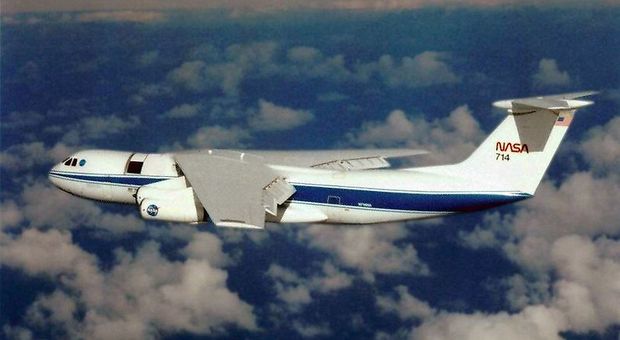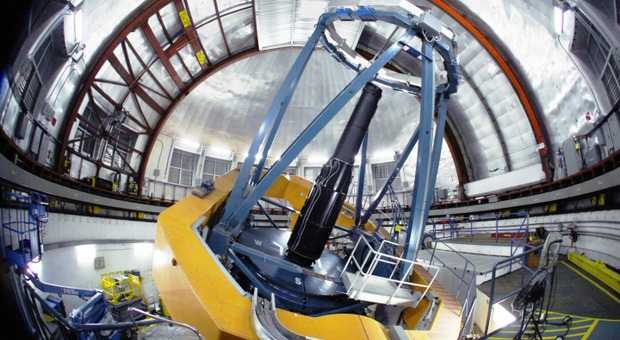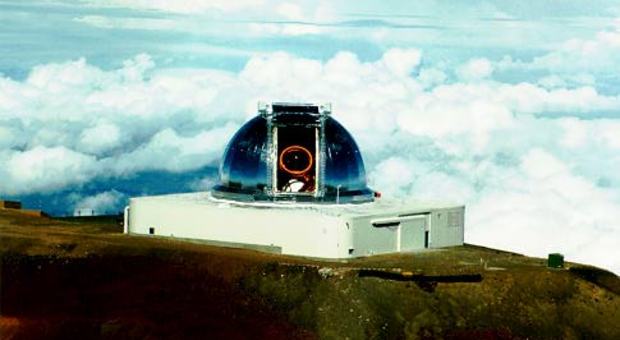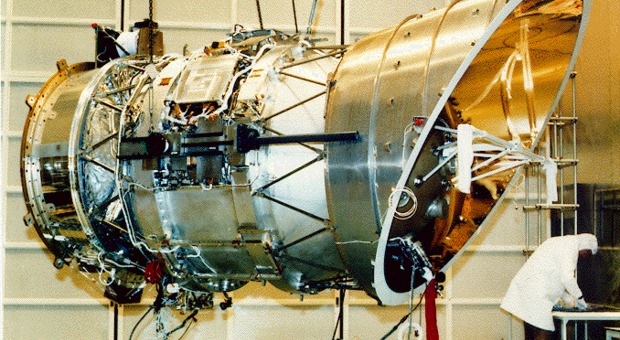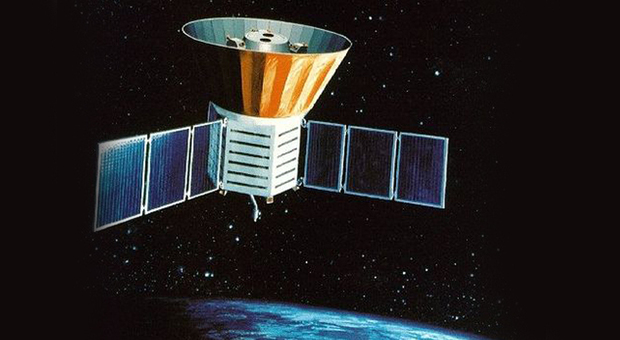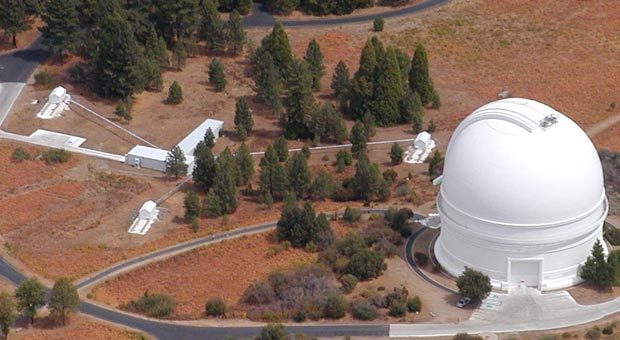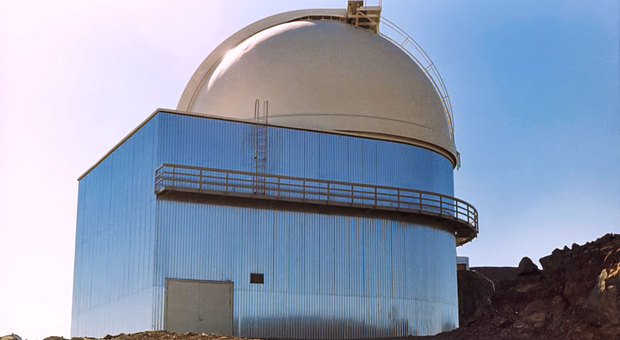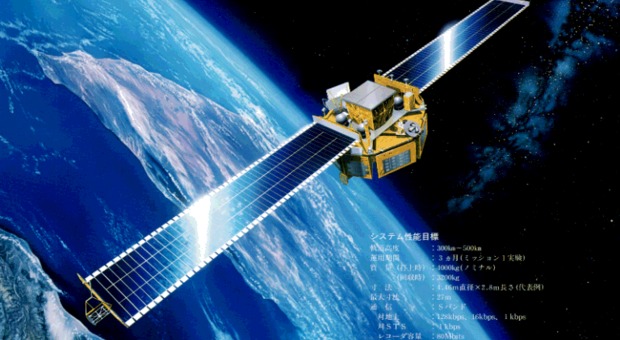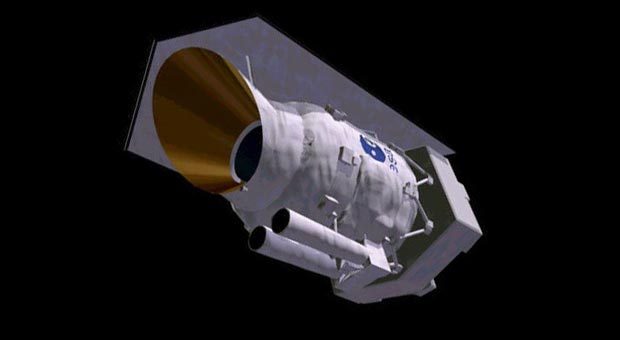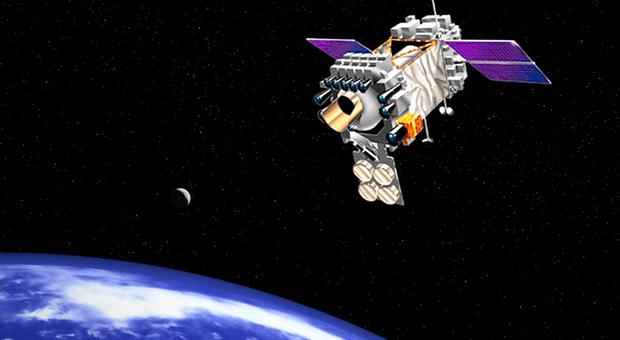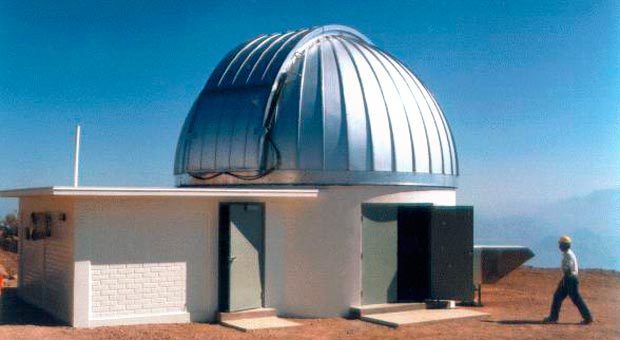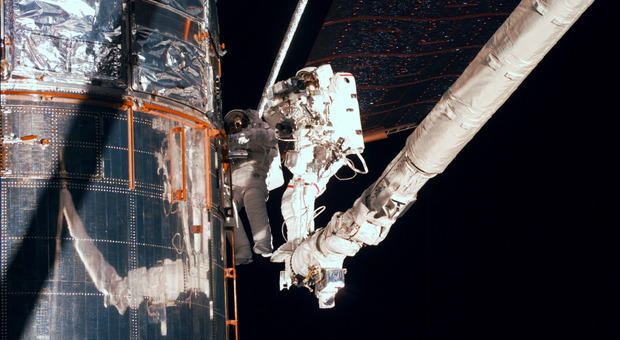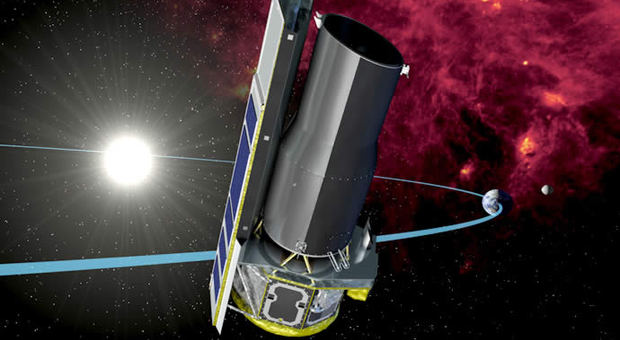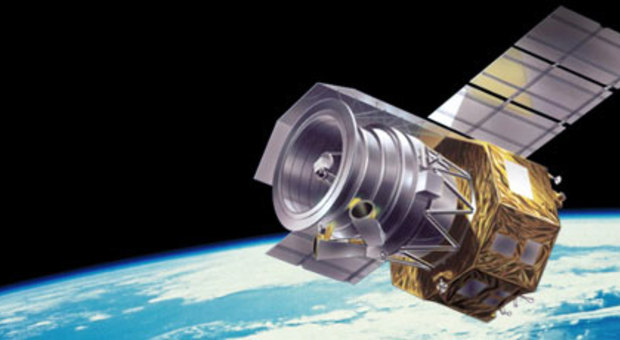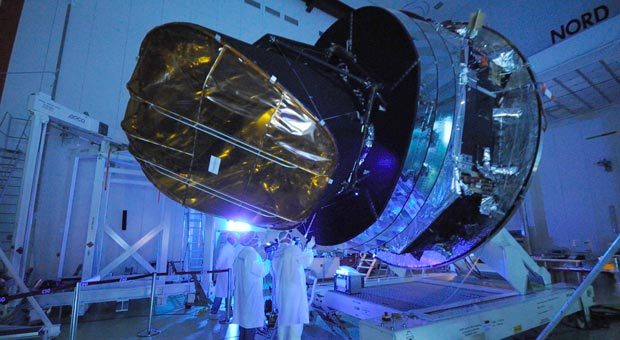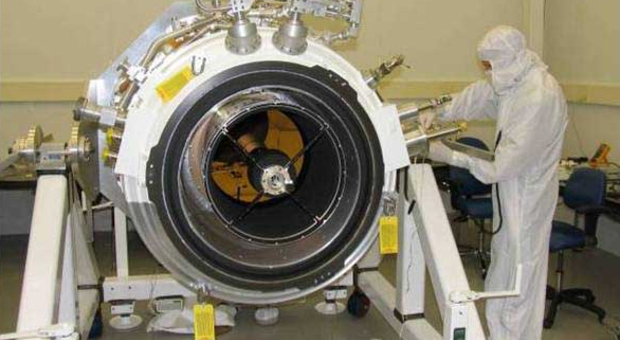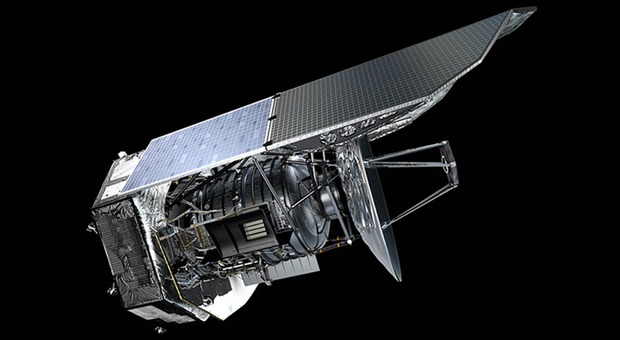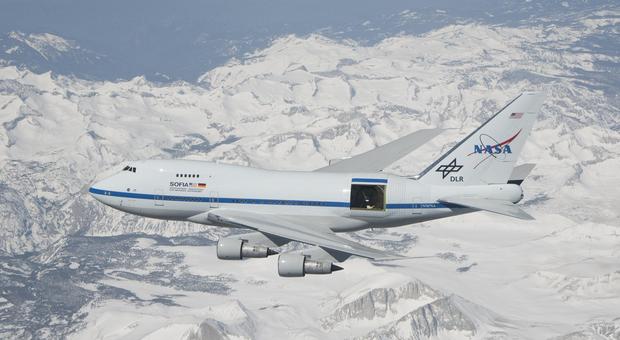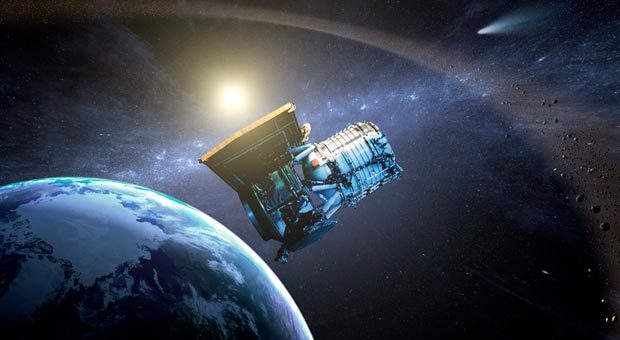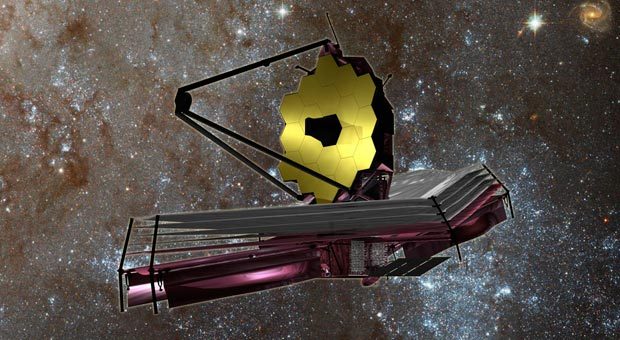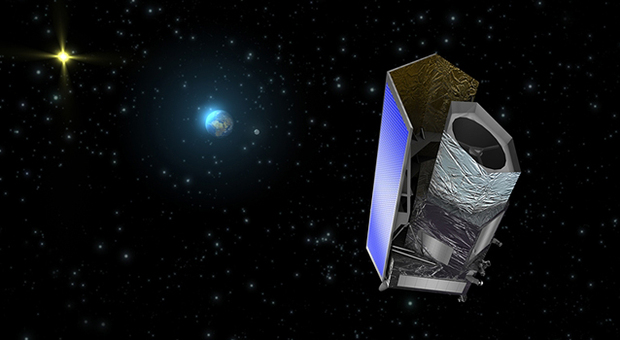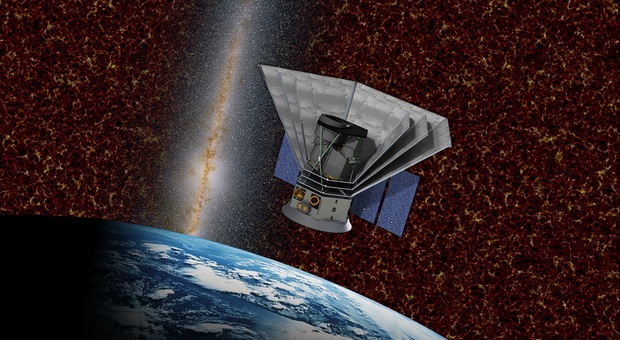-
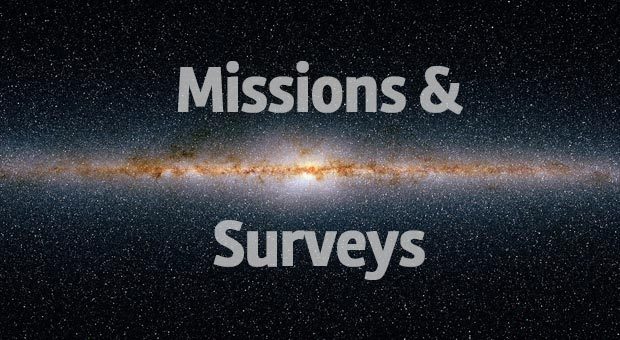
Introduction
The era of infrared astronomy spans many decades, culminating in a dramatic array of telescopes on the ground, in the air, and beyond the Earth.
Highlighted here are past, present, and planned telescopes and key instruments, along with fundamental surveys that opened up the infrared sky.
While virtually any modern telescope can accommodate infrared detectors, the focus here is on facilities specifically designed to study the infrared sky.
Links to the mission's home pages appear at the lower-right corner of the image when available.
-
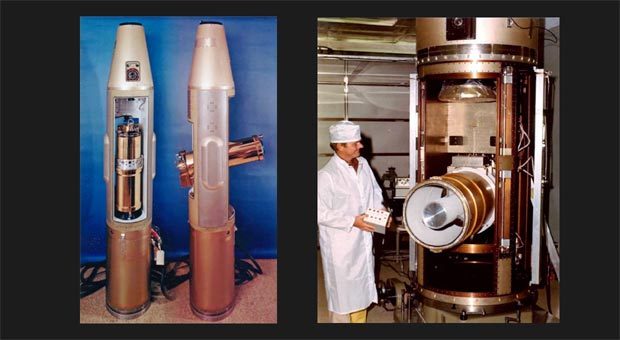
Early Sounding Rocket Experiments
Throughout the late 1960's and 1970's a number of rocket-borne experiments launched infrared detectors above the Earth's atmosphere. These pioneering missions, including such projects as FIRST, HI STAR, FAIR, SCOOP, SOFT, & DOT, helped researchers get their bearings in the mid-infrared sky.
It was necessary to launch these missions on rockets to get past the obscuring blanket of air that absorbs longer-wavelength infrared radiation. Primarily funded by the U.S. Air Force, these projects very much set the stage for later generations of space-based observatories.
-
1968
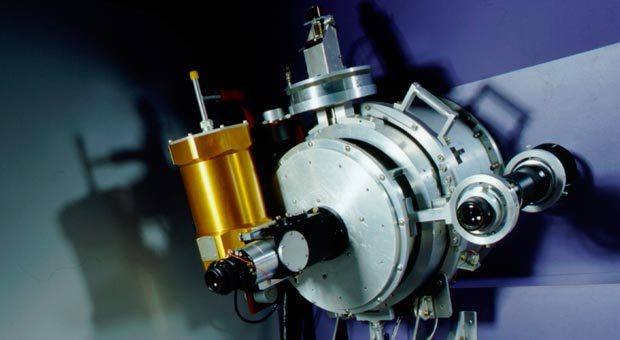
Learjet Infrared Telescope
Astronomer Frank Low led a project that flew a 12" infrared telescope on a NASA Learjet. Flying above most of the infrared-absorbing atmosphere provided a stable platform for targeted observations of sources like planets.
One key result was the discovery that both Jupiter and Saturn put out more heat than they receive from the Sun, suggesting they have an internal heat source.
-
1968
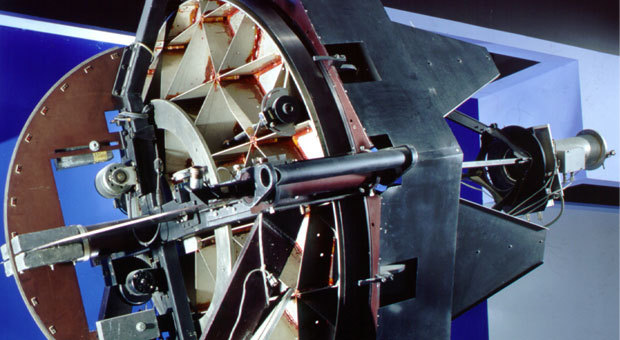
Two-Micron Sky Survey
The Two-Micron Sky Survey (TMSS) was the first large-area near-infrared survey of the sky. It was carried out by a team at the Mt. Wilson Observatory, led by Caltech researcher Gerry Neugebauer.
The survey covered approximately 75% of the sky and discovered around 20,000 infrared sources, including star forming regions, galaxies, the center of our Galaxy, and many stars.
The team used liquid nitrogen cooled PbS detectors, which were most sensitive to infrared light at a wavelength of 2.2 microns.
-
Kuiper Airborne Observatory (KAO)
The Kuiper Airborne Observatory (KAO) was a C-141A jet aircraft that carried an infrared telescope into the upper atmosphere, to altitudes of 12,500 m (41,000 ft). At these heights, the telescope was above 99% of the infrared-absorbing water vapor in the atmosphere, giving the KAO a relatively unobstructed view of the infrared sky.
The KAO flew missions for 20 years, and was responsible for discovering the faint rings of Uranus in 1977, and the presence of water in the atmospheres of Jupiter and Saturn.
-
United Kingdom Infrared Telescope (UKIRT)
The United Kingdom Infrared Telescope, UKIRT, is a 3.8-meter infrared telescope located on the summit of Mauna Kea, in Hawai'i. It began operations in 1979 and, at the time, it was the world's largest dedicated infrared telescope.
It is still in use today, primarily to carry out a deep all-sky survey in the infrared, called the UKIRT Infrared Deep Sky Survey (UKIDSS).
The telescope is owned and run by the United Kingdom Science Technology Facilities Council, who recently announced that UKIRT will be shut down or transferred to a new owner at the end of 2013, due to lack of funds.
-
NASA Infrared Telescope Facility (IRTF)
The IRTF is one of NASA's leading ground-based infrared observatories. It was built in 1979, specifically to support Voyager's encounters with Jupiter and Saturn.
Today, half its time is still used by astronomers to observe every kind of thing in the Solar System, including the atmospheres and satellites of the major planets, the volcanoes on Io, the clouds of Titan, the asteroid belt, comets, and Near-Earth Objects (asteroids that come very close to the Earth).
The IRTF is located on the summit of Mauna Kea, on Hawai'i, and is funded by NASA and the NSF.
-
Infrared Astronomical Satellite (IRAS)
The Infrared Astronomical Satellite (IRAS) was the first ever space-based infrared observatory to carry out a full-sky survey, covering 96% of the sky. Launched in 1983, it was a joint mission between the US, UK and the Netherlands, and lasted 10 months before its coolant ran out. It observed at wavelengths of 12, 25, 60 and 100 microns.
IRAS detected 350,000 infrared sources, 70% of which were new discoveries. It also discovered wisps of warm dust, called infrared cirrus, across most of the sky.
-
Cosmic Background Explorer (COBE)
COBE measured the cosmic background radiation of the Universe in infrared and microwave wavelengths across the whole sky, providing vital insights into the conditions of the early Universe.
COBE discovered an exact match between the measured temperature in all directions and the model (called a blackbody curve) predicted by Big Bang theory. COBE also discovered tiny fluctuations in the temperature of the cosmic background radiation, which track density variations in the early Universe. Astronomers believe that these variations led to the formation of galaxies.
-
Palomar Testbed Interferometer (PTI)
The Palomar Testbed Interferometer connected three small telescopes so they could function as a single 110-meter telescope through a process called interferometry. The precision design of the interferometer was aided by working at an infrared wavelength of 2.2 microns, which is somewhat longer than visible light wavelengths.
PTI allowed astronomers to precisely observe the positions, shapes, and sizes of stars. It was operated by NASA's Jet Propulsion Laboratory through 2008.
-
Deep Near Infrared Survey of the Southern Sky (DENIS)
DENIS was a ground-based survey of the southern sky observing simultaneously at three near-infrared wavelengths (0.82, 1.25, & 2.15 microns). The observations were made with with the 1-meter ESO telescope at La Silla, Chile.
Scientists and engineers from seven European countries and from Brazil collaborated on the survey.
-
Infrared Telescope in Space (IRTS)
The Infrared Telescope in Space (IRTS) was a cryogenically cooled, small (15 cm mirror) telescope that flew from March - April 1995. During that time, it surveyed approximately 10% of the sky in many infrared wavelengths, from 1.4 microns to 700 microns. The IRTS was the first Japanese orbiting mission for infrared astronomy.
The IRTS was just one of a number of experiments included on a spacecraft called the Space Flyer Unit (SFU), which was retrieved by the Space Shuttle Endeavour on Jan 20, 1996.
-
Infrared Space Observatory (ISO)
The Infrared Space Observatory (ISO) was a European Space Agency mission, launched in 1995. Thanks to improvements in infrared technology and detectors, ISO was thousands of times more sensitive than the first space-based infrared observatory, IRAS. With its 60 cm mirror, ISO observed in a wavelength range from 2.5 - 240 microns, until its coolant ran out in 1998.
Among ISO's discoveries were the presence of water vapor in star forming regions, the first detection of the earliest stages of star and planet formation, and observations of one of the most luminous galaxies in the Universe, Arp 220.
-
Midcourse Space Experiment (MSX)
MSX was a Ballistic Missile Defense Organization satellite experiment to map infrared sources in space. It was launched as a demonstration of the technology that would be required to identify and track ballistic missiles in flight, but MSX provided large amounts of astronomical data as well.
It mapped the Galactic plane in infrared wavelengths, filling in the areas previously missed by IRAS and further studying areas identified as particularly bright and interesting. Calibration measurements for MSX were used to calibrate the later Spitzer Space Telescope and Akari missions.
-
Two Micron All Sky Survey (2MASS)
2MASS was the first complete, ground-based, high-resolution, digital survey of the entire sky at any wavelength. The project used two telescopes, in the US and Chile, to gather data at 1.25, 1.65 and 2.17 microns. The resulting uniform, calibrated, near-infrared survey is widely used by astronomers.
Key science goals included probing the large-scale structure of the Galaxy, completing an accurate census of stars in our neighborhood, and discovering faint brown dwarfs and active galactic nuclei.
-
Hubble Space Telescope
While not primarily designed to be an infrared telescope, Hubble's view opened up to the infrared with the installation of the Near Infrared Camera and Multi-Object Spectrometer (NICMOS) during its second servicing mission in 1997.
NICMOS allowed Hubble to peer through dust at infrared wavelengths of 0.8–2.5 microns. It contributed near-infrared data to Hubble's famous Ultra Deep Field, revealing galaxies too faint and distant to be seen by any previous telescope.
NICMOS is not currently in operation, though it has been largely superseded in 2009 with the installation of the Wide Field Camera 3 (WFC3), which is sensitve to wavelengths up to 1.7 microns.
-
Spitzer Space Telescope
The Spitzer Space Telescope is a retired NASA infrared space telescope and the final element of the NASA Great Observatories program. Spitzer was launched in August 2003 carrying a near-infrared camera (IRAC), mid-infrared spectrograph (IRS) and a mid- to far-infrared photometer (MIPS). Since it began routine science operations in December 2003, Spitzer has revealed the Universe in new ways, from mapping extrasolar planet temperatures to discovering a giant ring around Saturn to helping to uncover some of the most distant galaxies in the universe.
In 2009 Spitzer began its "warm mission" after exhausting its cryogenic coolant, subsequently operating only the two shortest wavelength cameras on IRAC.
In 2016, warm Spitzer entered its "Beyond" mission phase which continued until its decommissioning on January 30th, 2020.
-
Akari
Akari was Japan's second infrared space mission, and designed as a follow-up to IRAS. Its name means "light" in Japanese. It was launched in 2006, and observed more than 94% of the sky before its coolant ran out in 2007. Nevertheless, observations continued in the near-infrared until an electrical failure in 2011.
Akari's science results included the infrared detection of supernova remnants in a nearby galaxy, observations of active star formation in spiral galaxies, and detections of mass loss from dying red giant stars in the Milky Way.
-
Planck
Planck is a space-based, Cosmic Microwave Background (CMB) survey mission studying the afterglow of the Big Bang itself. Planck has an order of magnitude better sensitivity and about 50 times the resolution of the original COBE mission. It is an ESA mission with NASA participation.
In 2013 the Planck team released the most detailed map of the CMB ever made. From the patterns of minute fluctuations in brightness seen across the entire sky, researchers have refined our understanding of the age of the universe (13.8 billion years) and its composition (4.9% ordinary matter, 26.8% dark matter, 68.3% dark energy).
-
Wide-Field Infrared Survey Explorer (WISE)
WISE is a NASA mission designed to survey the entire sky in the mid-infrared. Taking over 1.5 million images of our Solar System, our Galaxy, and the Universe, it made the first discovery of some of the coldest stars in the Universe, called Y-dwarfs, and has discovered tens of thousands of new asteroids.
WISE ran out of coolant in late 2010 but continued in a warmer configuration, called "NEOWISE," for 4 months, searching for Near-Earth Objects, including potentially hazardous asteroids. It was put into hibernation in 2011, and reactived in 2013 to continue its asteroid-hunting mission.
-
Herschel Space Observatory
Herschel was an ESA mission with NASA participation. Observing at wavelengths from 55–672 microns, it was the only mission exclusively dedicated to the far infrared. It operated for 4 years before its coolant ran out in 2013.
Herschel revealed the structure of the early Universe, and how the earliest galaxies formed and evolved. In 2013, Herschel announced observations of the youngest-ever protostars, capturing the earliest stages of star formation. Herschel also revealed the chemistry of the interstellar medium, and found vast new reservoirs of star forming material in our galaxy.
-
Stratospheric Observatory For Infrared Astronomy (SOFIA)
A joint project between NASA and the German Space Agency, SOFIA has a 2.5-meter telescope mounted in the rear of a Boeing 747. SOFIA flies in the stratosphere, high enough to get above most of the infrared-blocking water vapor in the atmosphere. SOFIA's instruments are sensitive to optical, infrared and submillimeter light, and saw first light in May 2010.
SOFIA studies planetary atmospheres and surfaces, the structure, evolution and composition of comets, the physics and chemistry of the interstellar medium, and the formation of stars.
-
NEOWISE
The NEOWISE project is the asteroid-hunting portion of the Wide-field Infrared Survey Explorer (WISE) mission. After a 4 month prime mission, the spacecraft was hibernated in February 2011. Upon reactivation in December 2013, it continued a multiyear survey in infrared bands, until it was decommissioned on August 8, 2024.
The infrared detectors on NEOWISE make it an ideal platform for characterizing the properties of the small bodies in the Solar System, and allow astronomers to make better determinations of size and composition.
-
James Webb Space Telescope (JWST)
JWST is the scientific successor to the Spitzer and Hubble Space Telescopes. JWST is the biggest optical/near-IR space telescope ever launched, with a 6.5 m mirror that will give it unprecendented resolution and sensitivity.
JWST is designed to study the first galaxies that formed in the early Universe, and observe planet formation. It will also be vital for observing exoplanets and detecting atmospheric conditions than might be able to support life.
JWST launched on December 25, 2021.
-
Euclid
Euclid is a European Space Agency (ESA) mission to study the geometry and nature of the Universe. While it is specifically designed to look back to the early universe and probe the nature of dark energy, its observations will also be useful for exploring a wide range of astronomy topics.
In January 2013, NASA joined the mission, and will provide 16 state-of-the-art infrared detectors for the onboard science instruments. Euclid was built by Thales Alenia Space, and construction started in July 2013. Euclid launched July 1, 2023 at 8:12 AM PDT.
-
Spectro-Photometer for the History of the Universe, Epoch of Reionization and Ices Explorer (SPHEREx)
SPHEREx is a NASA Medium Explorer mission designed to 1) constrain the physics of inflation by measuring its imprints on the three-dimensional large-scale distribution of matter, 2) trace the history of galactic light production through a deep multi-band measurement of large-scale clustering, and 3) investigate the abundance and composition of water and biogenic ices in the early phases of star and planetary disk formation.
SPHEREx will obtain near-infrared 0.75-5.0 micron spectra every 6 arcseconds over the entire sky. It launched at 8:10 p.m. PDT on March 11, 2025.
-
Nancy Grace Roman Space Telescope
The Nancy Grace Roman Space Telescope (previously known as WFIRST) is a planned NASA mission, intended to study some of the most fundamental questions in astronomy.
Why is the expansion of the Universe accelerating, and what is the nature of the "dark energy" that is thought to be driving it? Are there solar systems like ours out there, with planets like the Earth?
Roman is designed for a 5 year mission and is expected to launch in the mid 2020s.


